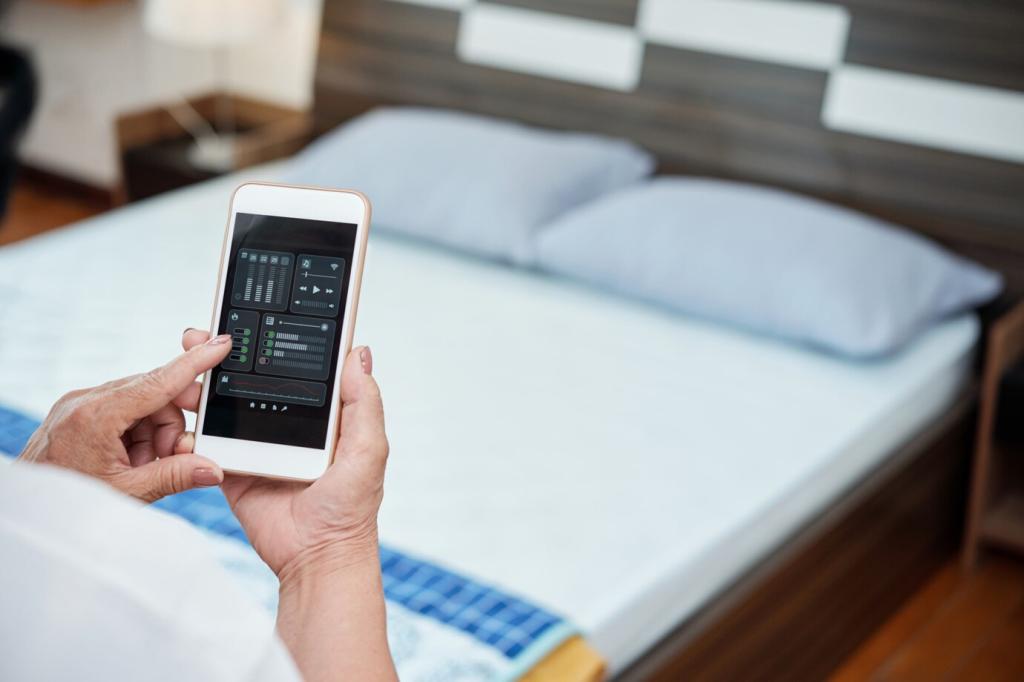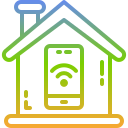The Role of IoT in Modern Home Innovations
The integration of the Internet of Things (IoT) has revolutionized the way we interact with our living spaces. Today’s modern homes are becoming smarter, safer, and more efficient, with IoT at the heart of this transformation. By connecting everyday objects to the internet, homeowners enjoy unprecedented levels of control, automation, and convenience. These advancements go beyond simple connectivity, fostering environments that adapt to occupants’ needs while maximizing resource management. This article explores how IoT is shaping contemporary living, highlighting key areas of innovation and what the future may hold for homes powered by interconnected devices.
Smart Home Automation
01
Modern homes leverage IoT-enabled devices to deliver sophisticated lighting and climate management solutions. Intelligent thermostats and smart bulbs adapt to occupancy, time of day, and ambient conditions, optimizing energy usage while enhancing comfort. For instance, lights can automatically dim in the evening or brighten in response to natural sunlight detected by sensors. Similarly, climate control systems analyze weather forecasts and household activity to maintain ideal temperatures. The result is an environment that adjusts itself with minimal intervention, reducing wasted energy and supporting a sustainable lifestyle without sacrificing personal comfort.
02
IoT brings unprecedented connectivity to household appliances, transforming traditional tools into smart devices that communicate with each other. Refrigerators can track inventory and suggest grocery lists, while washing machines and ovens can be remotely started or monitored via smartphones. This interconnectivity extends to maintenance alerts, ensuring that devices run efficiently and any issues are detected early. Integration among appliances means that homeowners can coordinate their use—such as having the coffee maker start when the morning alarm goes off—creating frictionless routines. As appliances grow more intelligent, day-to-day tasks become easier, quicker, and more intuitive.
03
The evolution of home security has been greatly accelerated by IoT technologies. Smart locks, cameras, and alarms provide real-time monitoring and control over access points, all managed conveniently from mobile applications. Homeowners receive instant notifications of unusual activity, enabling timely response whether at home or away. Integration with other systems, such as lighting or voice assistants, enables automated scenarios like lights turning on when motion is detected. The ability to grant temporary or scheduled access to visitors further enhances convenience and flexibility. Personal data protection measures are continually improving, helping residents feel secure in highly connected environments.
Enhanced Security and Safety
IoT surveillance systems offer continuous, real-time monitoring of both indoor and outdoor environments. Unlike traditional setups, these systems allow for live streaming, remote access, and sophisticated activity recognition. Homeowners can receive alerts for specific events such as unauthorized entry, package deliveries, or even suspicious movements captured by cameras. The high-definition video feeds can be securely accessed from anywhere, keeping users informed and in control. This continuous vigilance not only deters intruders but also makes it possible to quickly address incidents as they arise, thus enhancing the overall security framework of the home.

Energy Efficiency and Sustainability
Smart Meters and Monitoring
The introduction of smart meters has transformed the way energy, water, and gas usage are tracked in the home. Through IoT connectivity, these meters provide real-time data on consumption patterns, giving homeowners detailed insights into how and when resources are used. This information is accessible through intuitive dashboards, making it easy to identify high-usage periods or inefficient appliances. With this knowledge, residents can make informed decisions to adjust their behaviors, set targets, and track progress over time. Utilities can also leverage this data to improve service delivery and support grid stability, contributing to larger-scale sustainability.
Automated Resource Management
IoT-enabled automation systems help manage household resources with a level of precision and responsiveness unattainable by manual methods. For example, smart irrigation systems water gardens based on soil moisture and weather forecasts, avoiding unnecessary use. Intelligent power strips cut electricity to devices that aren’t in use, while connected appliances adjust cycles based on usage patterns. These solutions collectively reduce unnecessary consumption, optimize processes, and support a more eco-friendly lifestyle. Automated resource management is increasingly becoming a standard feature in modern homes committed to sustainability.
Integration with Renewable Energy
As more homeowners adopt renewable energy sources like solar panels or wind turbines, IoT systems are essential for maximizing their effectiveness. Smart inverters, battery storage management, and grid integration technologies balance energy production and consumption, ensuring optimal use and minimizing reliance on external power grids. Residents can track how much of their energy comes from renewables, adjusting their usage to align with production peaks. This seamless integration facilitates greater adoption of clean energy and empowers individuals to actively participate in the transition to a sustainable future.
